Alumni

Alumni Spotlight
Casey Harms, M.D.
December 7, 2021
Current city and state: Spokane, WA
Graduation year: 2020 (Residency), 2021 (CT Fellowship)
- What you did/where you went post graduation: Spokane, WA, doing a mix of cardiothoracic and general anesthesia.
- Why did you choose to attend OHSU for residency? I could sense the leadership had a clear understanding of where the field of anesthesiology is heading over the next 10-20 years, and had a solid framework to train the next generation of anesthesiologists.
- Who influenced you most during your time at OHSU - Valerie Sera
- The most important thing you learned while in APOM: To think outside the box to search for ways to help patients.
- What advice do you have for APOM residents? OHSU's anesthesia residency is tough and not for the faint of heart. You will work hard, but embrace this. Look for experiences above and beyond what is asked of you (and there are plenty of opportunities if you look) and you will get even more out of it.
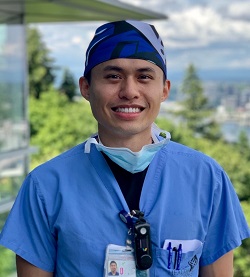
Jeremy Bengson, M.D.
November 17, 2021
Current city and state: Denver, CO
Graduation Year: 2020 (COVID Grad)
- What you did/where you went post graduation? I am currently an Assistant Professor in the Department of Anesthesiology at the University of Colorado School of Medicine. I spend a majority of my clinical time working as a generalist at the Anschutz Medical Campus as part of the neuroanesthesiology and multispecialty anesthesiology teams. I also care for patients at the UCHealth Ambulatory Surgery Center at Inverness, where I provide regional anesthesia for patients undergoing orthopedic procedures. Here, I work with the team surgeons for the Denver Broncos/Nuggets and Colorado Rockies/Avalanche/Rapids. I primarily supervise and teach residents, CRNAs, AAs, and SAAs, but also work my own cases on occasion.
- Why did you choose to attend OHSU for residency? I chose OHSU for its collegial work environment, reputation for training excellent clinicians, and its unique Oregon Scholars Program for integrated critical care training. Being able to take the tram to work in the heart of the outdoor and foodie wonderland that is Portland was another easy draw.
- Who influenced you most during your time at OHSU? OHSU is teeming with so many influential figures that I am humbled to have had a chance to work with, but weekly oral board sessions aside, I witnessed Dr. Kirsch personally transport patients from ICUs to the ORs and magically appear in all places around the hospital during emergencies, all while still managing the board and his administrative responsibilities. He set a leadership standard that was unmatched and did it routinely with humility, side by side with us, and that by far, was one of the most admirable qualities about him that continues to motivate me now even after leaving OHSU.
- The most important thing you learned while in APOM? No task is ever below you. Build good habits early and don’t cut corners. Follow through on your work. Check on your patients the next day. Stay that extra few minutes after your shift to ensure a safe handoff to the next team and don’t leave loose ends for your colleagues to tie up. The habits you build now will make your life so much easier and more rewarding in the future.
- What advice do you have for APOM residents? Try hard to learn everybody’s names and introduce yourself to everyone you work with (surgeons, nurses, pharmacists, anesthesia techs, etc). You never know who will show up to the bedside during an emergency. You will feel a lot more at ease when a recognizable face shows up, making communicating during a crisis that much easier when you can call people by their actual names.
Remember that you are part of a team. Anesthesiologists naturally fall into a leadership role being able to navigate all parts of the hospital and communicate with all care teams, but humble yourself and ask for people’s opinions. You’ll be surprised at how much insight they offer you and keep you from making critical mistakes. These people you form relationships with at work will end up being great friends/resources as you progress through your training. Don’t forget that life exists outside of work. Enjoy it with those most important to you!
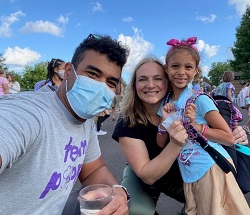
Stacy Fairbanks, MD
November 17, 2021
Current city and state: Shorewood, WI
Graduation year: 2012
- What you did/where you went post graduation: I was faculty at the University of Colorado for 8 years and then was recruited to Medical College of Wisconsin (MCW) to be the residency Program Director.
- Why did you choose to attend OHSU for residency? I went to med school at OHSU and loved the anesthesiology residency.
- Who influenced you most during your time at OHSU? Dr. Kirsch influenced me the most during my time at OHSU. I have always said, since that time, that he was the best boss I have ever had. He worked very hard along with the faculty that he led and he had a focus on excellence in education and in research and clinical care. I learned a lot from him during my time at OHSU and now am super lucky to be working with him again at MCW. I often tell my husband that one of my goals is making Dr. Kirsch proud.
- What advice do you have for APOM residents? Find something you feel passionate about and pursue it, always work hard, and never stop learning!
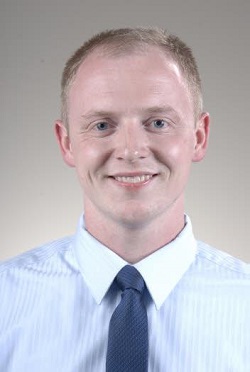
Tyler Paradis, M.D.
October 19, 2021
Current city and state - Battle Ground, WA
Graduation year -2017
- What you did/where you went post graduation - private practice, Columbia anesthesia group, Vancouver, WA
- Why did you choose to attend OHSU for residency? - known for excellence, close to home for me, progressive and committed to inclusion
- Who influenced you most during your time at OHSU? Ryan Fink, Jeff Kirsch, Chris Swide (sorry! Can’t pick one)
- The most important thing you learned while in APOM - never be afraid to ask for help, oftentimes the worst things happened simply because someone didn’t ask for help. There is incredible strength in teamwork and putting multiple minds together. This is true both for emergencies and also for just problem solving.
- What advice do you have for APOM residents? - Never stop learning regardless of where you go. Research things; contemplate what you can learn from the people you work with, not just MDs. There is something to be learned from literally every health care professional you work with.
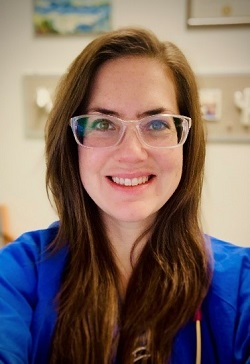
Katie Menzel Ellis, M.D.
October 19, 2021
Current city and state - Portland, OR
Graduated in 2015
- What you did/where you went post graduation - VA Portland!
- Why did you choose to attend OHSU for residency? I chose OHSU because the OSP-CCM program was the best and most established program of its kind on the west coast. I also loved the culture of the program and the smaller size, which helped foster personal relationships within the program and department.
- Who influenced you most during your time at OHSU? Matthias Merkel! He was my faculty advisor and really helped me figure out what I wanted from my career.
- The most important thing you learned while in APOM -Never be afraid to ask for help and lean on your colleagues. Everyone brings their own strengths and expertise to the table, so utilize your team’s abilities to the fullest!
- What advice do you have for APOM residents? Try to learn everything you can! Ask questions, seek out opportunities, and try new things.
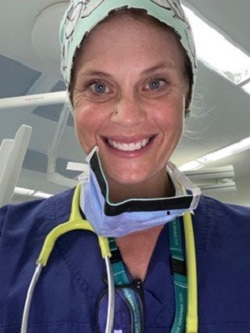
Cherie Long, M.D.
October 19, 2021
Bend, Oregon
Bend Anesthesia Group
Graduated in 2015
I came to Oregon from Texas and was a resident at OHSU from 2011-2015. I choose OHSU because, as my program director, said in Texas, "it’s the only place better than here because it’s on a hill!” In all reality, we had family in Oregon, we were excited about leaving the south and I fell in love with the wonderful department at OHSU. The attendings at OHSU are compassionate, brilliant and excited to teach. I loved my friends and co-residents. I was always supported as a person at OHSU (especially when I had twins). The department really cares about you, your family, your well being and your education. They are always going above and beyond to make sure you’re a happy, healthy physician.
After training, I came directly from residency to private practice in Bend. I have 4 children, a wonderful husband and farm acreage with views of the mountains. I have been part of the M&M committee here, liaison for OB anesthesia, and now medical director of the Perioperative Surgical Home. My advice would be to find your passion in medicine. Find out what other things in anesthesia, you love. Be an expert at efficient regional blocks, practice outpatient surgeries, don’t feel like you have to do a fellowship because being an all around great anesthesiologist is a perfect choice. Don’t wait for the “right time.” There is no good time to get married, have kids, build a house, move to another state, etc. Just do it. Make yourself uncomfortable. We recently returned from a year away in New Zealand, where I worked as an anesthesiologist (and vacationed in a beautiful country). It can be done. You will be well prepared by the time you leave OHSU and you will be a fantastic anesthesiologist. Trust in the system and enjoy your time as much as you can.
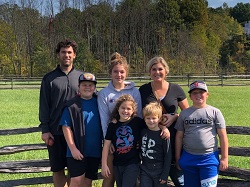
Ben Brooksby, M.D.
October 19, 2021
APOM 2013. I grew up in Portland and was happy to return for residency.
OHSU has incredible anesthesiologists. Many of my patients would not have survived without their knowledge and wisdom. I am grateful for the extra time they took to teach me and let me work and learn for myself. They were kind, but had high expectations for all of us.
When I have clinical questions I still wonder, “what would Dr. Aziz or Dr. Hand or Dr. Harrskog or Dr. Hegnell or Dr. Hou or Dr. Koh do?
I loved that Dr. Kirsch went skiing post-call. I try to do that too.
I am in private practice in Medford, Oregon. I am very happy in my career and in my life.
Thank you OHSU APOM!
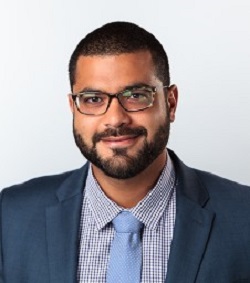
Omar I. Halawa, M.D.
October 19, 2021
Current city/state: Portland, OR
Graduation year: 2015
- What did you do following residency: Pain Fellowship (UCSD)
- Why did you select OHSU? Because of the Tram ;) Seriously, it’s pretty awesome!
- Faculty mentors you remember fondly: Ola Harrskog/Lars Hegnell (Basically the Swedes)
- The most important thing you learned while in APOM? Professionalism
- What advice do you have for APOM residents? Have fun while you work, you’re in this grind for a while
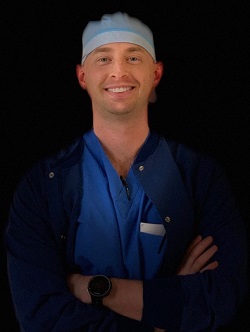
Andy Young, M.D.
October 19, 2021
Current city/state: Medford, OR
Graduation year: graduated OSP CCM program 2017
- Where did you go after residency? Medford was my first job after training.
- Why did you select OHSU? I attended OHSU because of the reputation and proximity to my family in Portland.
- Important mentors you had while training: Dr. Mattias Merkel was my most influential mentor during residency and fellowship and the reason I went into critical care medicine
- What is the most important thing you learned? The most important thing I learned at APOM was to treat every patient as though they are a family member - someone you genuinely want the best for, and would not do anything you wouldn't want for your own mother or father.
- Any advice for current residents? My best advice to current residents is to seek out as many ways to broaden your clinical experience, do cases you're not comfortable doing, and push yourself to gain as many skills as possible because you never know when you're by yourself at 0200 with limited resources and backup call at home and you need to make split second decisions.
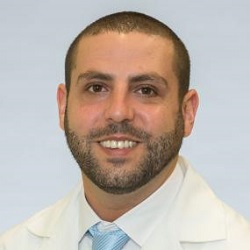
Shaun Yockelson, M.D.
October 19, 2021
Current city and state New Orleans, Louisiana
Graduation year 2017
- What you did/where you went post graduation. Ochsner Medical Center, New Orleans, LA. Section head of critical care, anesthesiology, associate medical director of the surgical intensive care unit, and abdominal transplant specialist.
- Why did you choose to attend OHSU for residency? Specifically for the Oregon Scholars integrated critical care program, and to return to my home state to complete my medical education.
- Who influenced you most during your time at OHSU? For the drive to live up to the 'triple aim' of the academic anesthesiologist, no doubt anyone had as much influence as Dr. Jeff Kirsch.
- The most important thing you learned while in APOM. An anesthesiologist is first and foremost a physician and not just a technician. It is up to us to own the perioperative care of our patients in its entirety, and our specialty's contributions to patient care and health system performance have as much to do with what we do outside of the operating room as within.
- What advice do you have for APOM residents? Every staff member in the department was curated to provide a unique and important contribution to trainee's education and growth. Whether how to conceive and conduct original research, get involved in advocacy, or excel in a clinical subspecialty, glean every bit you can from each and every faculty member - your future career and self will thank you!
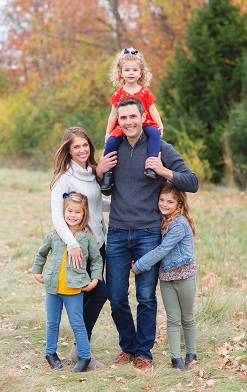
Jennifer Egan, M.D.
Feb. 22, 2021
Currently in Zionsville, IN
Originally from Odon, IN
I graduated in 2011 with a major, minor, post-grad in Psychobiology major, chemistry minor.
I am an Anesthesiologist at Southeast Anesthesiologists, LLC. It is a private practice at a community hospital where I have my own cases. The majority of cases are OBGYN, general surgery, orthopedics with blocks, vascular, ENT, podiatry and a big emphasis on breast cancer cases.
I am very fortunate to work part-time (3 set days/week) with a corresponding 60% call burden, which is busy but home call. I have also recently become part of our hiring committee as we grow our anesthesia group.
I transferred into OHSU’s anesthesia program after my CA-1 year following my then-fiance and now-husband Brian Egan across the country from my initial program at Indiana University
Dr. Kirsch influenced me most during my time at OHSU. He was a steady and present leader who was approachable and listened to and sought out resident ideas for betterment of OR efficiency. He was proactive in preparing us for oral boards as residents. He has shaped my idea of effective leadership and I hold him on a pedestal!
I have been in practice nearly 10 years. I started at OHSU, supervising residents and CRNAs, with half of my time dedicated to Doernbecher doing my own cases, while I waited for my husband to finish his pediatric anesthesia fellowship at Doernbecher.
Once he finished, we moved back to Indiana and I started at Indiana University Hospital, the academic center where I worked with residents and stayed up all hours doing liver and multivisceral transplants and high-risk OB. After 4 years at Indiana’s University, I left in a community position that provided a better lifestyle to raise our three daughters.
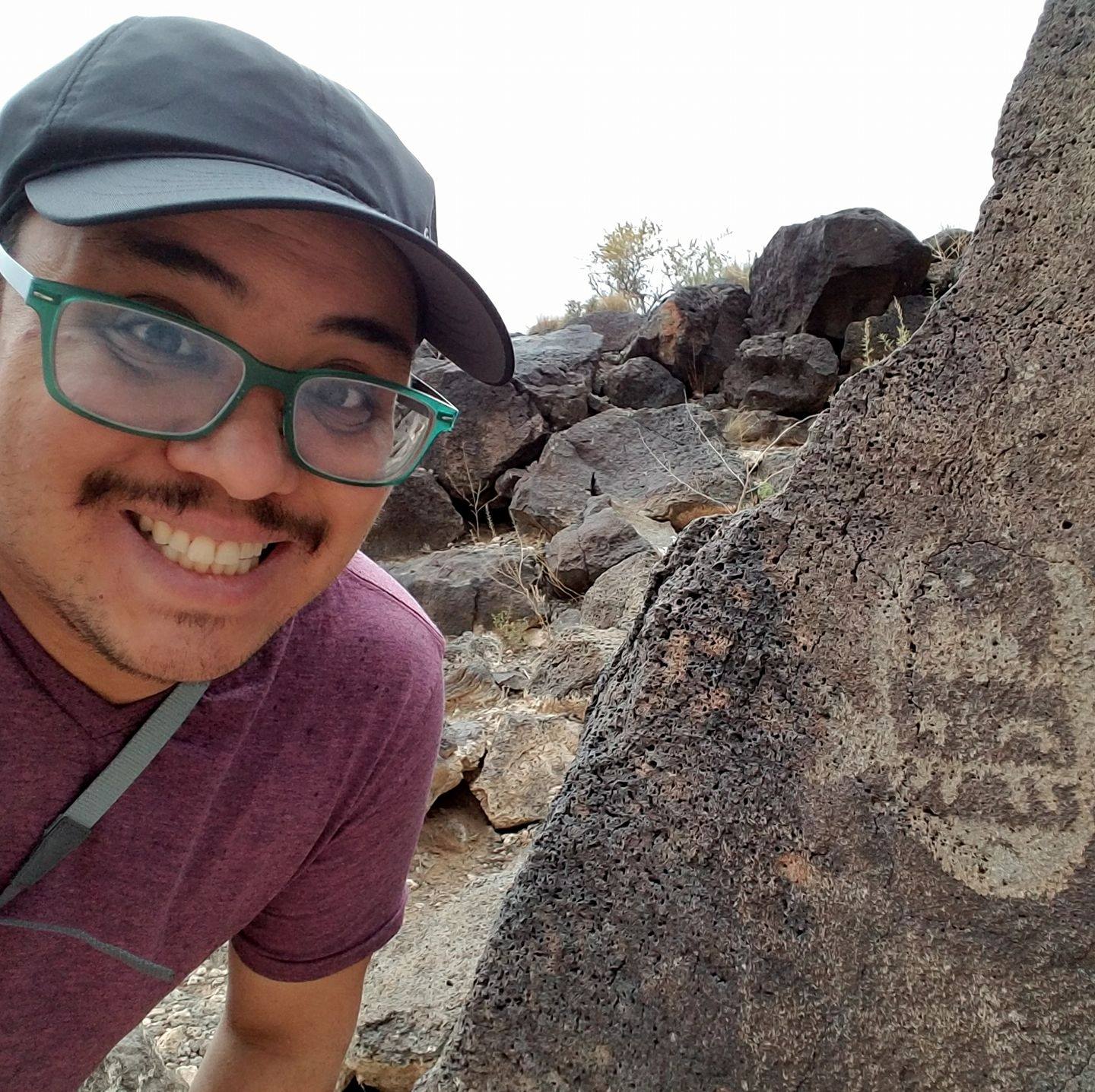
Dec. 17, 2020
Current city: Seattle, WA
Hometown: Frostburg, MD
Graduation year: Residency 2018 (OHSU)
Major, minor, post-grad: B.S. Chemical Engineering; B.S. Chemistry (NCSU ’07); NIH Post-Bacc IRTA (‘08-09); M.D. (University of MD ’14) , Pediatric Anesthesiology Fellowship (UW/SCH ’19)
My current title is acting Assistant Professor at the University of Washington – Seattle’s Children’s Hospital where I work as a pediatric anesthesiologist.
My practice is 100% pediatrics, though we do care for some young adults who are still being treated in our facilities. I also have an academic affiliation with University of Washington. I spend 80% working clinically which includes providing anesthetic care in the operating rooms and non-OR locations as well as on our mobile sedation service. The other 20% is reserved academic time to work on research, publications, teaching, etc. On most of my clinical days, I am involved in supervising and teaching residents, fellows, and CRNAs, but I also have a good portion of days where I work solo. Outside of work, I enjoy exploring Seattle and the Puget Sound and am working on picking up some old and new hobbies like visiting National Parks, reading for fun, and learning to play piano.
I chose to attend OHSU for several reasons. I was looking for a mid-size program where I wouldn’t get lost in the shuffle, but would also have a big enough group to spread the workload around. I wanted to be in a place where I’d get a diverse training experience, where the emphasis was on resident education, and where I’d get exposure to big cases, sick patients, and subspecialties earlier in my training. I also wanted to be in a place where I felt like the people supported each other and genuinely enjoyed working together. OHSU fit all these criteria. It was really after interviewing and interacting with people in the department that I really solidified my decision – not only did OHSU have a bunch of the things I was looking for, but I felt like the of the department was one that I could thrive in both personally and professionally. This instinct turned out to be right on and I can’t recommend the program highly enough.
I have so many good memories at OHSU, it’s hard to pick just one! One of my favorites was getting to travel to Peru on a surgical mission trip as part of our global health program. Our team consisted of nursing , anesthesia, and surgical team members from OHSU and elsewhere. For the anesthesia team, we had another medical student, resident, fellow, and attending from the anesthesiology department as well as an alum. We worked really hard, providing excellent surgical care to kids who needed surgeries to correct their cleft lips and palates. During this trip, I learned a lot about providing anesthesia in less-resourced areas and how to get creative with the medications and supplies that were available. It was also nice to be able to connect on a deeper level with other colleagues on the trip. I encourage all residents to try to be part of a global trip if it is possible.
My advice for APOM residents is to lean in, take ownership of your cases, and remember that every case can teach you something. Ask many questions and use your resources while you have access to them. The people in APOM have so much experience and knowledge, and eventually you won’t have access to them like you do when you are a resident, so learn as much as you can. In the same regard, take good notes about how you do things and why -- I was surprised how different the same cases are approached at different institutions, and you won’t always remember how you did things as a resident.
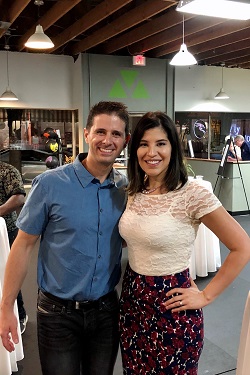
December 7, 2020
Viviana Ruiz Barros, MD
Current city & state: Mountain View, CA
Hometown city & state: Cali, Colombia
Graduation year: 2020
Chief Resident 2019-2020
Major, minor, post-grad: Molecular and Cell Biology (UC Berkeley), Medical Degree (UC Davis)
I am a pediatric anesthesia fellow, specializing in pediatric anesthesia care at Stanford Lucile Packard Children’s Hospital. I will be completing my fellowship training in July of 2021 and will likely stay in the Northern California region close to family and friends. My goal is to join a practice in which I can care for (mostly) children and adults of diverse socioeconomic backgrounds.
Why did you choose to attend OHSU?
In addition to being a top-tier residency program, OHSU was the only institution during my interview trail that discussed the importance of diversity and inclusion in anesthesia. This was rare to hear in 2016 and it is one of the reasons I chose to attend OHSU. I also loved the OHSU hospital and the city of Portland. I felt the program had the important elements to be happy as a resident, which held true throughout my training.
Who influenced you most during your time at OHSU?
Many people influenced me during my time at OHSU. If I had to choose one person it would be Dr. Jeff Kirsch: we worked together numerous times, mostly while on call, and I learned a lot from his kind yet fierce leadership style.
What is the most important thing you learned while at APOM?
The most important thing I learned while at APOM is to stand up for what you believe. As a resident I was in numerous situations in which I felt the need to speak up (for my patient, a colleague, or myself), and although the intrinsic hierarchy of our medical education system makes it challenging to find our voice, I learned that doing so can have a tremendous positive impact. It is also important to identify your support system and allies. I was fortunate to receive abundant support from APOM.
What advice do you have for APOM residents?
The advice I’d give to APOM residents is to not beat yourself up over mistakes but be reflective. At the end of each day, think about what went well and what you can improve upon, and do things better next time. Don’t forget to enjoy the learning process, ask for feedback, and ask a lot of questions - it’s good to distinguish your attending’s personal preferences from evidence-based medicine!
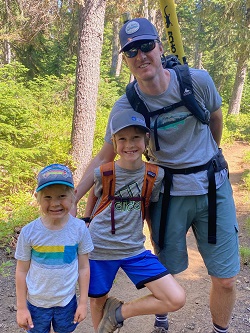
Nov 18, 2020
Currently a partner and enjoying life in Bend
John Meyer, MD
Currently in Bend, Oregon
Originally from Overland Park, Kansas
I graduated from OHSU APOM in 2018 (I was the Chief Resident from April 2017 to April 2018). I have a B.S. in Geological Engineering from the University of Idaho, an M.S. in Civil Engineering from Colorado State University, and an M.D. from the University of Kansas School of Medicine. I did a stint as a consulting engineer for four years in Wyoming before jumping ship into the rabbit hole of medicine.
I’m currently a partner with the Bend Anesthesiology Group in Bend, Oregon. Clinically, I’m a generalist providing adult and pediatric anesthesia throughout the St. Charles Health System in central Oregon and several of the ambulatory surgery centers in Bend. I’m also the President-Elect of the Oregon Society of Anesthesiologists – I’ll be following the leadership of the current OSA President, fellow OHSU APOM alum Dr. Seth Palesch. Outside of anesthesia, I enjoy post-residency life by partaking in all that living in Bend offers. My wife and I get our two boys, 8 and 5, outside as much as possible – biking, skiing, fishing, camping, paddling, and hiking. I’m also currently curling in my third season as part of the Bend Curling Club - yeah, the ice sport with the brooms - and am the Vice President of that organization
OHSU APOM prepared me exceptionally well and I can’t imagine a better place to train – the case volume relative to the program’s size allows for incredible learning opportunities, and we have the most dedicated faculty on the planet. I liked the place so much that I recently signed on as a Clinical Assistant Professor in the department, this position allows me to lecture and mentor residents from afar, which I enjoy immensely.
To the residents, training is hard by nature, it has to be challenging since there is a lot to learn in four years. But remember that the way to get comfortable in this is to get your reps in, learn from every case big or small, and take ownership of every patient encounter. You may not have realized it at the time, but you signed on to a life of leadership, which is one of the most rewarding aspects of being a physician anesthesiologist. Don’t worry, there is light at the end of the tunnel (the fishing gets way better after you finish).